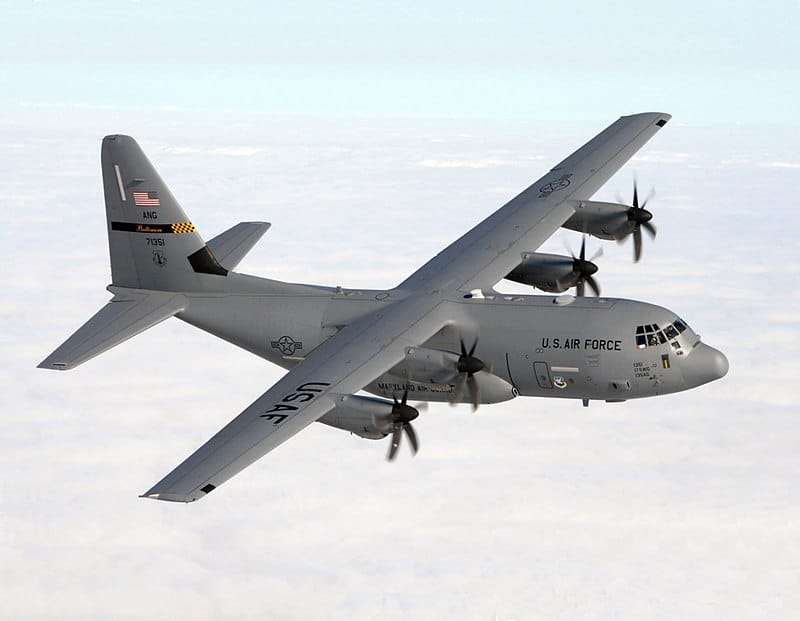Aviation
Lockheed and Tata Team Up to Build C-130J MRO Facility in India

Lockheed Martin and Tata Advanced Systems, a subsidiary of the Tata Group, have announced a significant partnership aimed at bolstering the infrastructure supporting India’s C-130J Super Hercules Medium Transport Aircraft (MTA) fleet.
This collaboration involves two primary goals: establishing a dedicated C-130J Maintenance, Repair, and Overhaul (MRO) hub in India and expanding local production capabilities to manufacture and assemble more C-130J units for the Indian Air Force (IAF), pending approval from both the US and Indian governments.
Boeing confirms 797: A New Era for Mid-Size Aircraft
The proposed MRO hub will not only enhance the maintenance and support services for the C-130J fleet but also potentially position India as a key player in the global supply chain for this platform. This move reflects a growing trend in the Indian defense sector, where the nation is leveraging its industrial capabilities to support and enhance its military assets.
The initiative builds on the successful establishment of a Tata-Airbus C295 aircraft line in Vadodara, Gujarat. The delivery of the first Indian-built C295 this year marks a milestone in India’s defense manufacturing journey, with a total of 56 C295s set to replace the Indian Air Force’s aging fleet of Avro HS748 transports. This success provides a strong precedent for the new C-130J MRO and manufacturing venture.
Emirates Ends 28-Year Singapore-Melbourne Fifth Freedom Route
India’s ongoing commitment to the MTA model underscores its strategic approach to defense procurement. Should the government select the C-130J for its MTA program, the IAF will benefit from an established global supply chain, c130j vs c17 with India poised to become a leading manufacturing hub for the C-130J.
This development comes at a time when many European countries are transitioning their legacy C-130 fleets to newer models, such as the Airbus A400M Atlas. In contrast, India would align its regional supply chain with c390 vs c130j the Middle East and North Africa if it continues to choose the Super Hercules.
The decision is also reflective of broader regional dynamics, with Egypt recently committing to acquire two additional Super Hercules aircraft, with an option for ten more subject to US State Department approval. This regional commitment highlights the enduring value of the C-130J platform in maintaining robust airlift capabilities.

Aviation
Airbus Enhances A350 Cabin with 10-Abreast Seating

Airbus has announced a new partnership with Jiatai Aircraft Equipment, a Chinese aircraft seating manufacturer, to supply upgraded economy-class seats for the A350 widebody series.
This collaboration, unveiled at the 2024 Airshow China, focuses on developing a newly designed economy seat tailored for the A350‘s New Production Standard (NPS) cabin.
One of the key features of the NPS cabin is the ability to accommodate 17-inch wide economy seats, compared to the previous 16.5-inch wide seats that airlines were limited to in the A350’s earlier configurations.
British Airways Unveils Its Brand-New First Class Cabin for the Airbus A380
This change is made possible by the expanded space in the NPS cabin, which is 35 inches longer and 4 inches wider than the previous version. This extra space is achieved by slightly moving the cockpit wall forward and shifting the rear pressure bulkhead back by one frame.
The wider cabin allows airlines to add up to 30 extra economy seats without compromising comfort. For airlines opting for a 3-4-3 seating layout, the 17-inch wide seats are an excellent choice for a more comfortable passenger experience. However, some airlines, such as Iberia, may choose to retain a 9-abreast layout with wider seats for added comfort.
The NPS cabin also offers enhanced flexibility for airline operators. One major advantage is the ability to easily switch between a 9-abreast and 10-abreast seating configuration without requiring significant downtime for aircraft reconfiguration. Airlines can use the same seat rails, tracks, and IFE interfaces, making the transition smoother and quicker.
Etihad Airways Unveils 10 Exciting New Routes for 2025
In addition, the design of the floor attachments and air-conditioning systems has been optimized for 10-abreast seating, meaning airlines can upgrade their cabins without needing to make substantial modifications to the aircraft’s structure.
Though it’s still unclear when Jiatai’s economy-class seats will be officially added to the A350’s Buyer Furnished Equipment (BFE) catalogue, the collaboration marks a significant step toward enhancing the A350’s cabin offerings.
With this partnership, Airbus is providing more seating options for airlines, ensuring that they can meet diverse customer needs while improving overall operational efficiency.
-

 Aviation2 months ago
Aviation2 months agoMicrosoft Flight Simulator Raises $3 Million to Bring Back the An-225 Mriya
-

 Airlines2 months ago
Airlines2 months agoQatar Citizens Can Travel to the United States Without a Visa
-

 Aviation2 months ago
Aviation2 months agoQatar Airways bans these new Electronic Devices on plane
-

 Airlines2 months ago
Airlines2 months agoJapan Airlines Rolls Out Free Domestic Flights to International Passengers
-

 Defence2 months ago
Defence2 months agoWhich Country Has the Largest Fleet of Fighter Aircraft?
-

 Airport2 months ago
Airport2 months agoWestern Sydney Airport Welcomes Its First Plane After 6 Years of construction
-

 Airlines4 days ago
Airlines4 days agoDAMAC Air: Dubai’s New Luxury Airline Offers Free Flights for Registration
-

 Aviation2 months ago
Aviation2 months agoDid you know ? Once Boeing 747 carried 1088 passenger in 1991








